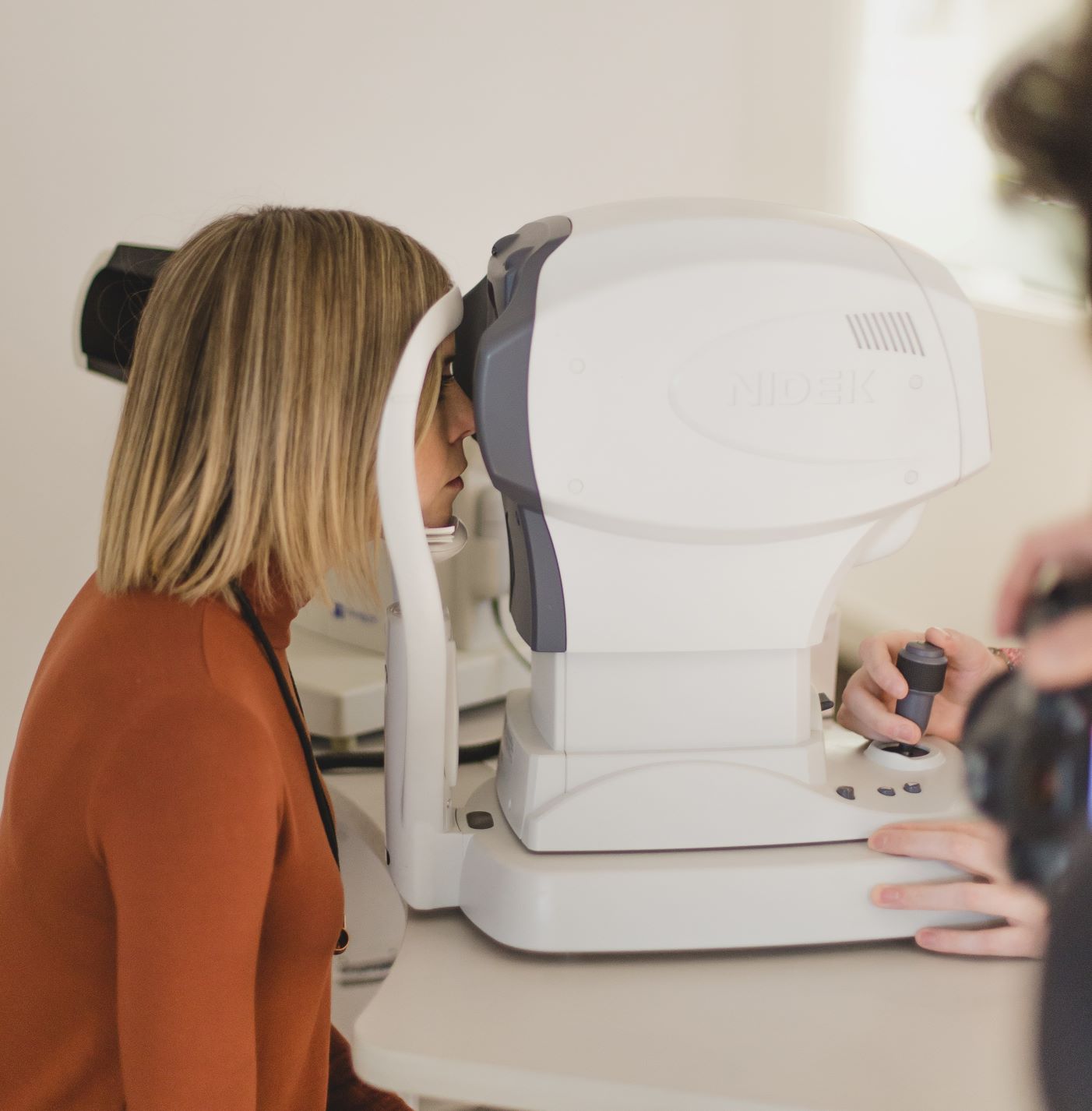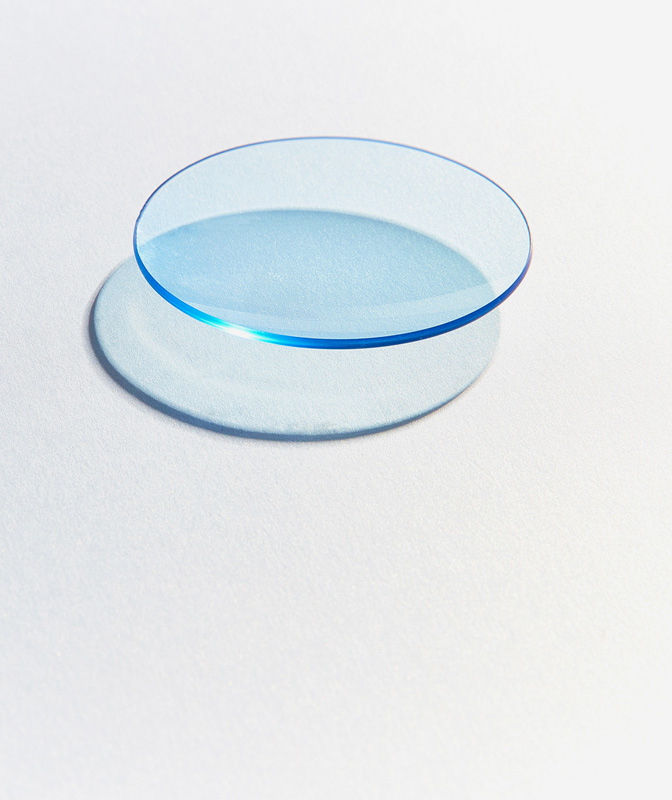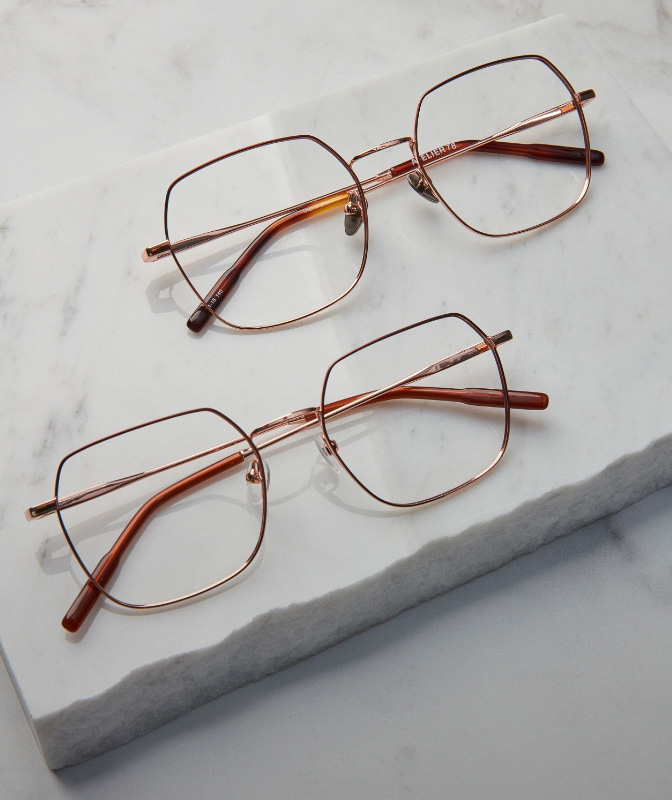Trained to treat various eye problems, our optometrist Thuy-Anh Duong reveals the most common symptoms to help you determine what to do and when to seek urgent eye care.
Pink Eye (Conjunctivitis)
Symptoms: Red eye, irritated eye, burning eye, itchy eye or watery eye, with or without eye discharge, with or without swollen eyelids.
Eye care: Artificial tears + anti-inflammatory and/or antibiotic eye drops—or allergy eye drops, depending on the nature of the conjunctivitis.
Duration of symptoms: Approximately one week.
When to see a doctor: If the conjunctivitis does not improve after 48 hours, contact an eye doctor.
Although hardly pleasant, most cases of pink eye disappear on their own after a few days without treatment, but lingering conjunctivitis can be viral (caused by a virus), bacterial, or an allergic reaction. Each diagnosis requires a different course of treatment. It is therefore important that an optometrist identifies the cause to prescribe the proper treatment. For example, we often use artificial tears and antibiotic eye drops to treat bacterial conjunctivitis, but these are not effective remedies when it comes to viral or allergic conjunctivitis. If you have any doubts, avoid self-medicating and see an eye doctor!
Eye Stye
Symptoms: Swollen eye, often accompanied by a bump on the edge of the eyelid. Red or swollen eyelid.
Eye care: Heat and ocular massage, antibiotic ointment and wipes.
Duration of symptoms: Two weeks, but the stye’s growth peak usually takes place approximately seven days after it begins.
When to see a doctor: Contact your optometrist if the eye stye is too red, too painful, or if it worsens after a few days. You should also contact an eye doctor if, after treating the stye for a week, you don’t see any improvement. Your optometrist can then prescribe another treatment for you.
Eye styes happen when the glands are clogged. The skin around the eye swells and reddens. How to treat a stye? Thankfully, there are a few things you can do from the comfort of your home:
Warm compresses. Wet a clean washcloth with hot tap water to make a compress and place on the affected eye for 5 to 10 minutes every night. In order for the compress to work, the washcloth should remain as hot as possible, so you will need to wet the washcloth a few times during the treatment. Once you are done, massage the glands located around the edge of the eye, pressing gently towards the eyelashes to diminish swelling
Hot potato. Surprisingly efficient - even more than warm compresses! Take a potato and heat it up in the microwave for a few seconds until it’s very hot, but not burning. Then wrap it in a clean towel and use it as a compress. The potato will stay hot longer than a washcloth, and is therefore more efficient. Keep the potato on your eyelid for 5 to 10 minutes, then massage the stye.
Heated eye mask. Hassle-free, but more expensive than a warm compress or hot potato, a heated eye mask is like a magic bag - a hot therapeutic pack for your eyes. Its main appeal? You can simply heat it up in the microwave for a few seconds and it will retain its heat. Just like a compress, the heat will help liquify the swelling and, when massaging, the liquid trapped inside the stye will be released - not unlike a pimple! You can find heated eye masks in Doyle boutiques, or at your local pharmacy.
Red Eye
Symptoms: Red eye without pain, eye discharge, or loss of vision.
Eye care: Artificial tears, 3 to 4 times a day.
Duration of symptoms: A few days.
When to see a doctor: If after 24 hours the redness hasn’t diminished, or if your condition worsens, seek help at your local pharmacy. The pharmacist will be able to determine whether or not you should consult an optometrist urgently, or if you can wait 24 to 48 hours. Of course, if no recommended treatment has worked, book an emergency eye appointment to get a clear diagnosis and treatment.
Red eyes are quite common, and are often caused by eye dryness, passing eye irritation, or eye fatigue due to excessive exposure to screens. Treating the affected eye with artificial tears 3 to 4 times a day and making sure to take regular “screen breaks” helps. The situation usually gets better without any further complications.
However, in some cases a red eye can hide a more severe condition, such as uveitis or a corneal ulcer. These more severe conditions are accompanied by other symptoms, such as pain or sensitivity to light, difficulty opening the eye, or diminished vision. In this case, it is safest to book an emergency eye appointment with an optometrist to be assessed and treated as soon as possible.

Subconjunctival Hemorrhage
Symptoms: Bloody eye (the white part of the eye has suddenly become partially or completely red). There is no pain, discharge or loss of vision.
Eye care: N/A
Duration of symptoms: 7 to 10 days
When to see a doctor: If after 48 to 72 hours there is no improvement, OR if the redness is accompanied by systemic symptoms, such as nausea, vomiting or dizziness, go to the hospital immediately.
A subconjunctival hemorrhage looks impressive, but it’s usually benign and painless. It is often caused by a minor trauma or intense physical effort. People suffering from high blood pressure are more likely to develop them, because their blood vessels are more fragile than others. A bloody eye is similar to a bruise - the blood simply spreads after a vessel breaks in the eye. And just like a bruise, it will heal on its own. But in the meantime, it may change colour, turning blue, purple, and even yellow until the eye becomes white again!
Sore Eye
Symptoms: Painful eye without loss of vision or redness, presence of a burning sensation or itchiness.
Eye Care: Artificial tears.
Duration of symptoms: 24 to 48 hours.
When to see a doctor: Seek urgent eye care if:
the pain persists despite using artificial tears;
the pain is at 6 on a scale of 0 to 10, which means watching TV or reading becomes impossible;
your eye is sensitive to light.
Often, when a sore eye is mildly painful and the pain isn’t constant (it comes and goes), it is due to eye fatigue, caused by excessive use of screens, a stressful situation and/or lack of sleep. If that is the case, the best thing to do is rest, and your eye will soon get better.
Eye Trauma
Symptoms: None,or possibly visual changes, depending on the impact.
Eye care: N/A
Duration of symptoms: N/A
When to see a doctor: Even if you’re not experiencing any symptoms or discomfort, it is strongly recommended to consult an optometrist after an eye trauma, whether you’ve received a blow or an object in the eye. The eye doctor will often dilate your pupil to inspect the peripheral retina and make sure it isn’t torn, ripped or detached. If you’re experiencing a loss of vision or a loss of visual field, you must see a doctor within 24 hours.
Flashing Lights in Eyes
Symptoms: Flashing lights in eyes, or a sudden and abnormal quantity of floaters (tiny specks drifting in your field of vision when you stare at a light surface).
Eye care: N/A
Duration of symptoms: N/A
When to see a doctor: Urgent eye care is required! Your retina may be torn or detached, and waiting could cause irreparable damage to your vision. These symptoms can also be a sign of a vitreous detachment (the gel that fills the posterior cavity of the globe) - a less severe condition that often comes with age. The latter is quite common, but still requires an assessment of the peripheral retina to make sure there are no complications.
Loss of Vision or Black Curtain in Vision
Symptoms: Sudden loss of vision in one or both eyes.
Eye care: N/A
Duration of symptoms: N/A
When to see a doctor: You must absolutely see an eye doctor on the same day.
A sudden, major loss of vision can be caused by what is known as an eye stroke. An eye stroke is similar to a heart attack, but in the eye. It is a thrombosis of the eye, meaning that a clot has formed in an artery or vein and there is a blockage in the retina. This obstruction can cause a sudden loss of vision, often in one eye, rather than both. This specific case requires a consultation with an ophthalmologist for assessment and treatment. You will also need a complete medical checkup from your doctor, because after an eye stroke, you’re more at risk of developing a stroke elsewhere in the body (for example, in the brain). A sudden loss of vision or a black curtain can also be caused by a detachment of the retina. In any case, you must seek urgent eye care that same day.
Optometrist or Ophthalmologist?
When you contact Doyle for an eye emergency, you will be seen by an optometrist as soon as possible, usually the same day. You don’t need a referral to book an appointment - all you need to do is call us, whether or not you are a client here. We strongly urge you to call before heading to one of our boutiques, so that we can best figure out how to help you with your eye problem.
Most eye emergencies can be dealt with by our optometrists. If the problem seems more complex and requires specific treatment or a follow-up with an ophthalmologist, the optometrist will refer you to the right professional. Note that in order to be seen by an ophthalmologist, you need a referral from an optometrist or another doctor. Therefore, whatever the diagnosis, you won’t have wasted your time seeing an optometrist.
The optometrist can prescribe various treatments, such as eye drops, ointments, gels and certain oral medications which can solve a great number of minor eye problems quickly, all while avoiding the wait in a hospital emergency room.
Eye Emergency Cost
Seeing an optometrist for an ocular emergency isn’t free. Why? Because the government covers only part of the fee - the diagnosis. Follow-up, medical and pharmaceutical treatments are not covered, so there are fees for a consultation. Take note that some private insurance companies will reimburse you, depending on your plan. The advantage of consulting an optometrist for an eye emergency is that you can usually get an appointment quickly, avoiding a long wait in a hospital emergency room. Not to mention that you’ll be taken care of by an eye specialist, who can refer you to other professionals if necessary.
Written in collaboration with Dre. Thuy-Anh Duong, optometrist at the Mount-Royal boutique






